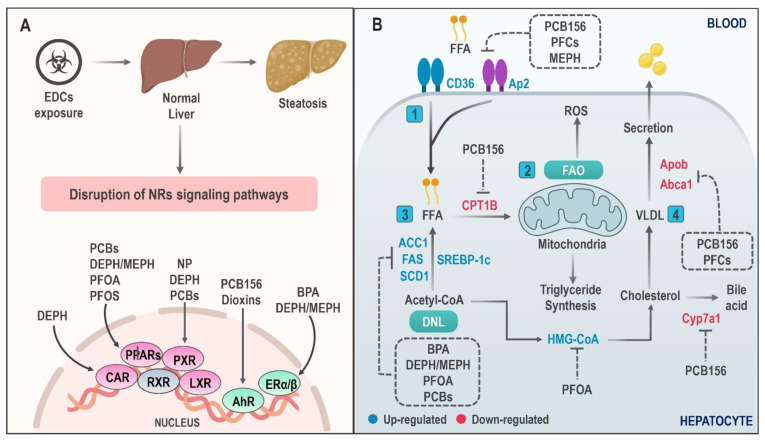Figure 1.
Molecular mechanisms involved in hepatic lipid accumulation induced by EDC exposure. (A) The steatosis-inducing effect of EDCs is mediated by binding with different nuclear receptors (NRs). The affinity profile of these substances for their receptors is variable. (B) NR signaling disruption with chemical exposure triggers an alteration in lipid metabolic pathways that promote lipids accumulation in the hepatocyte. Key mechanisms of action include (1) significantly increased lipid uptake, (2) decreased fatty acid oxidation, (3) increased expression of key regulators in de novo lipogenesis, and (4) blocking of lipid secretion in the form of VLDL particles and bile acid. Abbreviations: PCB: Polychlorinated Biphenyls; BPA: Bisphenol A; PFOS: Perfluorooctane sulfonate; PFOA: perfluorooctanoic acid; MEPH: Mono-(2-ethylhexyl) phthalate; DEPH: Di-(2-ethylhexyl) phthalate; NP: Nonylphenol; FAO: Fatty acid oxidation; FFA: Free fatty acid; ACC1: Acetyl-CoA carboxylase-1; SCD1: Stearoyl-CoA desaturase-1; FAS: Fatty acid synthase; VLDL: Very low-density lipoprotein; SREBP-1c: Sterol regulatory element-binding protein-1c; CD36: cluster of differentiation 36; DNL: De novo lipogenesis; ROS: reactive oxygen species.

